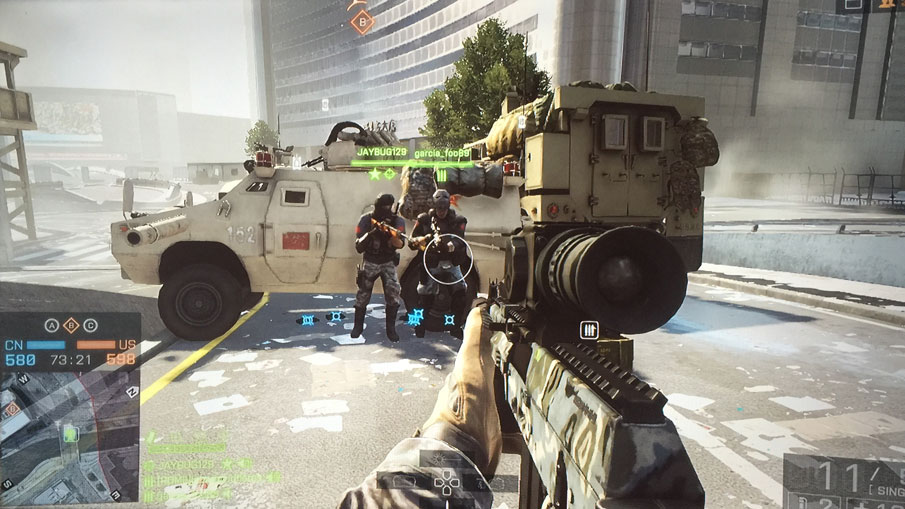Desde Junho desse ano, BOOM Salad vêm alugando os seus próprios “servidores” para o jogo violento, Battlefield 4. Isso significa que, esses meses passados, nós pagamos a uma companhia pelo privilégio em poder manter o nosso próprio ambiente de multijogadores online no jogo. Virtualmente qualquer pessoa no mundo que tem o jogo Battlefield 4, e que tem acesso à internet rápida e de boa qualidade, poderão jogar com os nossos próprios servidores.

Nos 120 dias em que o nosso servidor de Playstation 3 (PS3) tinha sido operacional, e aberto ao público, nós temos jogado com e contra uma variedade de idades, culturas, etnicidade, e gêneros. Isso tem custado a nós uma oportunidade única para observar e participar, em primeira mão ao, no que é conhecido mundialmente, um jogo multijogador ou Massivamente Multijogador.
Exemplos importantes desse gênero incluem World of Warcraft ou Minecraft. O jogo Minecraft, está tornando-se um fenômeno global e cultural, alcançando a sensação do jogo Pacman dos anos 80. Mais que um simples labirinto em que o objetivo nunca muda, e que nunca vai além do consumo de bolinhas, frutas e fantasmas, Minecraft pode muito bem ser um dos jogos mais sutilmente complexo que já foi inventado.
Como o nome já diz, o melhor a pensar é de um jogo que tenha camadas de complexidade. Cada camada fornece diversas oportunidades de socialização e interação empática com outros jogadores online. O número de jogadores que poderão participar em uma sessão individual interativamente depende da plataforma, mas para os consoles como o Playstation 4 (PS4), o máximo seria oito de cada vez.
Em conversas que nós tivemos com jogadores jovens de Minecraft, eles nos falaram que o motivo principal para o qual eles estarem jogando era para construir coisas com os amigos. E por falar em “construir coisas”, nós não queremos dizer que são espadas e bombas e outras armas, apesar de que isso tudo é possível. As crianças que nós falamos estavam mais interessadas em construir castelos com quartos com ornamentos incríveis e moradias subterrâneas (assista o vídeo abaixo). E ainda porque o jogo inclui representações de violência nas batalhas (os quais podem ser ligados ou desligados), ele é equipado com o tão chamado “jogos de vídeo game-violentos”, como Battlefield 4, e é portanto considerado por muitos dentro da comunidade de medicina por ser “prejudicial [à sociedade].”
Nas partes 1 e 2 dessa série, nós demonstramos como os argumentos de vídeo games com representações violentas baseiam-se em um “link” entre a violência do mundo real e violência do jogo de vídeo. Esse “link” é observável, de acordo com vários estudos médicos, em aqueles que jogam jogos violentos, no declínio mensurável na função cognitiva em áreas que são conhecidos como regulamentar e que influenciam o comportamento agressivo e violento. Independente se essas conclusões são exatas ou não, o fato é que eles não fornecem uma resposta satisfatória para a pergunta mais importante de todas, (algo que o BOOM Salad têm se esforçado desde a nossa primeira edição): Por que as pessoas jogam esses jogos em primeiro lugar?